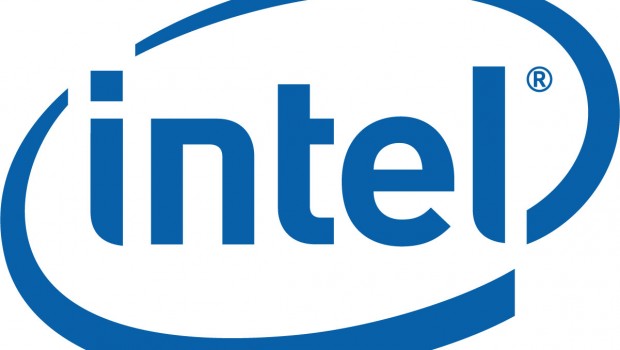Intel Launches World’s Best Processor for Thin-&-Light Laptops: 11th Gen Intel Core
Intel today unleashed a new era of laptop performance with the launch of its next-generation mobile PC processors and the evolution of its broad ecosystem partnerships that are propelling the mobile PC industry forward. New 11th Gen Intel Core processors with Intel Iris Xe graphics (code-named “Tiger Lake”) are the world’s best processors for thin-and-light laptops with unmatched capabilities for real-world productivity, collaboration, creation, gaming and entertainment across Windows and ChromeOS-based laptops.
Leveraging Intel’s new SuperFin process technology, 11th Gen Intel Core processors optimise power efficiency with leading performance and responsiveness while running at significantly higher frequencies versus prior generations. More than 150 designs based on 11th Gen Intel Core processors are expected from partners including Acer, Asus, Dell, Dynabook, HP, Lenovo, LG, MSI, Razer, Samsung and others.
Intel also introduced the Intel Evo platform brand for laptop designs verified to the second edition specification and KEIs of the Project Athena innovation program. Based on 11th Gen Intel Core processors with Intel Iris Xe graphics, devices featuring the Intel Evo badge are verified to be the best laptops for getting things done[5]. More than 20 verified designs are expected this year.
“11th Gen Intel Core processors with Intel Iris Xe graphics are a major leap forward in real-world processor performance and are the best laptop processors we have built,” said Gregory Bryant, Intel executive vice president and general manager of the Client Computing Group. “From productivity and content creation to entertainment and gaming, when you pick a system powered by 11th Gen Intel Core – especially one of our new Intel Evo co-engineered and verified designs – you know you are getting the best laptop experience possible.”
Introducing Intel Evo
Intel continues to lead the PC ecosystem in driving innovation across the platform to deliver the best computing experiences possible. The new Intel Evo platform brand represents the best laptops designed to help you focus and get things done no matter where you are. Based on 11th Gen Intel Core processors with Intel Iris Xe graphics and verified to the second edition specification and key experience indicators (KEIs) of Project Athena under an intensified testing methodology, Intel and its co-engineering partners are once again raising the bar for laptop experiences.
By measuring workflows under real-world conditions for consistent performance and battery life together, Intel’s unique testing-and measurement-methodology provides a preview into how a laptop will perform each day. Only the laptop designs that consistently meet or beat the KEIs and specification are verified to use the Intel Evo badge. KEI targets are minimums and include:
- Consistent responsiveness on battery[6]
- System wake from sleep in less than 1 second
- 9 or more hours of real-world battery life on systems with FHD displays[7]
- Fast charging with up to 4-hour charge in under 30 minutes on systems with FHD displays[8]
Intel Evo platforms also feature best-in-class wired and wireless connectivity[9] with integrated Thunderbolt™ 4 universal cable connectivity and Intel® Wi-Fi 6 (Gig+), as well as premium audio, webcam and display, all wrapped in sleek thin-and-light form factors for a premium experience. For highlights of the second edition target specification and the verification process, see the Intel Evo fact sheet.
11th Gen Intel Core Processors with Intel Iris Xe Graphics
11th Gen Intel Core processors with Intel Iris Xe graphics are the world’s best processors for thin-and-light laptops across both Windows and ChromeOS. They represent Intel’s most ambitious system-on-chip (SoC), delivering more than a generational leap in performance and the best experiences for U-series laptops in productivity, creation, gaming, entertainment and collaboration. A broad range of integrated features fuel the best thin-and-light platforms available with optimised CPU, GPU, artificial intelligence (AI) acceleration, software optimisation and platform capabilities that maximise real-world performance on the applications and features people use the most:
- Rich collaboration: 11th Gen processors are the best for collaboration with more immersive and personal AI-enhanced experiences, including enhanced audio with CPU offload for background noise suppression via Intel Gaussian and Neural Accelerator 2.0 (Intel GNA), AI-accelerated background blur and video super-resolution, the latest video decode and integrated Intel® Wi-Fi 6 (Gig+) – the best Wi-Fi technology for video conferencing[10] – all on a thin-and-light PC.
- Leadership productivity performance: More than 20% faster office productivity versus competitive products and on workflows that reflect how people use their laptops every day. Integrated Thunderbolt 4 capabilities also enable up to four ports for connecting to a universe of peripherals and single-cable access to fast-charging, external monitors and extended storage.
- Advanced content creation – Up to 2.7x faster real-world photo editing and up to 2x faster real-world video editing[11] versus competitive products, in addition to support for 8K HDR displays and up to four simultaneous 4K HDR displays.
- Immersive entertainment – 11th Gen Intel Core processors are the first in the industry with hardware-supported Dolby Vision, delivering more immersive content experiences and improving system-level power by approximately 20% versus the previous generation, translating to more than an hour of additional video streaming on battery[12].
- New gaming experiences – With up to 2x game performance over the previous generation[13], play Borderlands 3, Far Cry New Dawn, Hitman 2 and other popular game titles for the first time at 1080p on Intel’s integrated graphics. Share your success with friends with ability to game plus stream more than 2x faster than competitive products. All of this on integrated Intel Iris Xe graphics and in a thin-and-light design.
“The new 11th Gen Intel® Core™ processors with Iris® Xe graphics are delivering incredible performance and responsiveness to enable Windows customers around the world to be more productive and have fun today and in the future,” said Panos Panay, chief product officer, Microsoft.
“Based on extensive and deep collaboration between Intel and Google, we’re able to optimise the user experience, and we are thrilled to be bringing the next-generation of Chromebooks to market powered by 11th Gen Intel Core,” said John Solomon, vice president of ChromeOS.
Integrated and Optimised to Enable the Best Thin-and-Light Platforms
As detailed at Architecture Day 2020, new Willow Cove CPU and Intel® Xe graphics architectures on Intel’s new SuperFin process technology push the envelope on frequency – up to 4.8 Ghz – improving power efficiency while enabling specialised compute engines, accelerators and software optimisations to be integrated on the SoC. 11th Gen Intel Core processors deliver the best combination of the innovative compute engines needed for real-life workloads, including:
- New Intel Iris Xe graphics outperform 90% of the discrete graphics paired in this segment[14] and offer up to 96 EUs and up to 16MB of L3 cache.
- The first instruction set for neural network inferencing on integrated graphics with Intel® DL Boost: DP4a and the first with native support for INT8 data type, delivering up to 5x better AI performance[15].
- Hardware-hardened security with integrated Intel® Control Flow Enforcement Technology (CET) and Intel® Total Memory Encryption.
- Support for the high-performance AV1 CODEC that enables power-efficient support for 4K, even in constrained bandwidth environments.
- The first with image processing solution enabling vision sensing and adaptive dimming.
- Best-in-class Thunderbolt 4 connectivity, including support for up to four ports with universal cable connectivity for charging, data and video.
- The first mobile client SoC with CPU-attached PCIe Gen 4 interface and with up to four lanes.
With scalable performance across the 7- to 28-watt thermal envelope, nine processor configurations across two package designs for form factor flexibility and up to 4.8 GHz turbo frequency, 11th Gen Intel Core processors provide the single core speed crucial for advanced workloads on thin-and-light laptops.
| Processor Number | Graphics | Cores / Threads | Graphics (EUs) | Cache | Memory | Operating Range | Base Freq (GHz) | Max Single Core Turbo (GHz, up to) | Max All Core Turbo (GHz, up to) | Graphics Max Freq (GHz, up to) | Intel® DL Boost /
Intel® GNA 2.0 |
|||
| UP3 | Intel® Core™ i7-1185G7 | Intel Iris Xe | 4/8 | 96 | 12MB | DDR4-3200
LPDDR4x-4266 |
12-28W | 3.0 | 4.8 | 4.3 | 1.35 | √ | ||
| Intel® Core™ i7-1165G7 | Intel Iris Xe | 4/8 | 96 | 12MB | DDR4-3200
LPDDR4x-4266 |
12-28W | 2.8 | 4.7 | 4.1 | 1.30 | √ | |||
| Intel® Core™ i5-1135G7 | Intel Iris Xe | 4/8 | 80 | 8MB | DDR4-3200
LPDDR4x-4266 |
12-28W | 2.4 | 4.2 | 3.8 | 1.30 | √ | |||
| Intel® Core™ i3-1125G4 | Intel UHD Graphics | 4/8 | 48 | 8MB | DDR4-3200
LPDDR4x-3733 |
12-28W | 2.0 | 3.7 | 3.3 | 1.25 | √ | |||
| Intel® Core™ i3-1115G4 | Intel UHD Graphics | 2/4 | 48 | 6MB | DDR4-3200
LPDDR4x-3733 |
12-28W | 3.0 | 4.1 | 4.1 | 1.25 | √ | |||
| UP4 | Intel® Core™ i7-1160G7 | Intel Iris Xe | 4/8 | 96 | 12MB | LPDDR4x-4266 | 7-15W | 1.2* | 4.4 | 3.6 | 1.1 | √ | ||
| Intel® Core™ i5-1130G7 | Intel Iris Xe | 4/8 | 80 | 8MB | LPDDR4x-4266 | 7-15W | 1.1* | 4.0 | 3.4 | 1.1 | √ | |||
| Intel® Core™ i3-1120G4 | Intel UHD Graphics | 4/8 | 48 | 8MB | LPDDR4x-4266 | 7-15W | 1.1* | 3.5 | 3.0 | 1.1 | √ | |||
| Intel® Core™ i3-1110G4 | Intel UHD Graphics | 2/4 | 48 | 6MB | LPDDR4x-4266 | 7-15W | 1.8* | 3.9 | 3.9 | 1.1 | √ | |||
[5] Measured by Project Athena laptop innovation program Key Experience Indicators and 11th Gen Intel® Core™ processor Representative Usage Guides. For more complete information about performance and benchmark results, visit www.intel.com/Evo and www.intel.com/11thGen.
[6] Measured speed of premium Windows OS-based design while performing 25 workflows predictive of performance under a typical-use environment comprising multiple cloud-based and local apps and web pages including Google Chrome, Google G-Suite, Microsoft Office 365, YouTube and Zoom. Testing as of August 2020 conducted on laptops on DC battery ≥30%, connected to 802.11 wireless, and with shipped hardware configurations including Windows 10 and 250-nit screen brightness.
[7] Time taken to drain from 100% to critical battery level while performing workflows under a typical-use environment, comprising multiple cloud-based and local apps and web pages including Google Chrome, Google G-Suite, Microsoft Office 365, YouTube and Zoom. Testing as of August 2020 conducted on laptops connected to 802.11 wireless, and with shipped hardware configurations including Windows 10 and 250-nit screen brightness.
[8] Minimum charge attained in 30-minute window while powered off from OEM-default shutdown level. Performance varies by use, configuration and other factors. Testing as of August 2020.
[9] Intel® Wi-Fi 6 (Gig+) products enable the fastest possible maximum speed for typical laptop Wi-Fi products. Thunderbolt™ 4 is the fastest port available on a laptop, at 40 Gb/s, as compared to other laptop I/O connection technologies including eSATA, USB, and IEEE 1394 Firewire. Performance will vary depending on the specific hardware and software used. Must use a Thunderbolt-enabled device.
[10] As measured by OTA (Over the Air) Wi-Fi 6 (802.11ax) vs. Wi-Fi 5 (802.11ac) NB client Skype video conferencing test data, obtained in standard corporate IT 20 MHz and 40 MHz network deployment scenarios. See www.intel.com/11thgen for configuration details
[11] As measured by Content Creation: Video Editing workflow
[12] Intel estimates approximately 20% of system level power savings comparing VEBox enabled 4K24fps Dolby Vision playback on a TGL Core™ i7-1185G7 reference design vs. a similarly configured ICL Core™ i7-1065G7 reference design, translating into more than one hour of additional Dolby Vision content viewing time on the TGL Core™ i7-1185G7 design with a 40WHr battery. Testing as of August 2020.
[13] As measured by Gears Tactics (1080p Medium with variable rate shading enabled) on 11th Gen Intel® Core™ i7-1185G7 Processor vs 10th Gen Intel® Core™ i7-1065G7U Processor
[14] Based on market analysis of discrete graphics paired with U-series, sold in the past 12 months
[15] As measured by MLPerf v0.5 Inference with Offline Scenario using OpenVINO 2020.2 framework Closed ResNet50-v1.5 offline int8 GPU (Batch=32) on 11th Gen Intel® Core™ i7-1185G7 Processor vs OpenVINO 2020.2 framework Closed ResNet50-v1.5 offline FP32 GPU (Batch=32)







